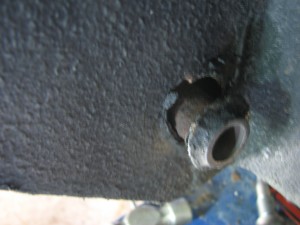Another Auto of Interest
Well, I’d heard the name before. Usually I’d thought of them as a British built variant. Like the AC Bristol or the MG Arnolt. I recently learned about an Aston Martin Arnolt (by the way, I want one of these…)
Historically it’s an interesting tale. Starting at the end of WWII as part of the war reparations acts the British were awarded access to many German manufacturers. Essentially the underpinnings are BMW mechanicals. The engine is, I’m told based on an aircraft engine. The engine featured a slightly modified version of BMW’s six-cylinder pushrod engine of 1,971 cc (bore 66 mm, stroke 96 mm). This engine, considered advanced for its time due to its hemispherical combustion chambersand very short inlet and exhaust ports, developed 130 horsepower[1] at 4,500 revs per minutes. In order to maintain a hemispherical combustion chamber, the valves had to be positioned at an angle to the head. In order to drive both sets of valves from a single camshaft, the Bristol engine used a system of rods, followers and bell-cranks to drive the valves on the far side of the engine from the single camshaft. The car weighs in at around 2100 pounds, so acceleration was brisk for the period.
There is nice write up here www.danjedlicka.com/classiccars/arnoltbristol.html rather than me writing it again. Hmm, can’t get that link to link.. copy and paste might work??
This car was recently purchased in Sweden and arrived at my door with some brake issues. Leaking front wheel cylinders, worn linings and rusty Al-fin drums. The brakes are Lockheed as fitted to Jaguar XK 120 and 140 models. The fronts are “self adjusting”, well maybe ;~)
As is usually the case many of the original parts are missing or have been bastardized in some way. Now begins the time consuming task of gathering the right stuff, which are as rare as hen’s teeth in most cases.
The new owner hopes to use the car for European invitational rallyes and prestigious US based shows. It will likely draw crowds due to it’s rarity.










